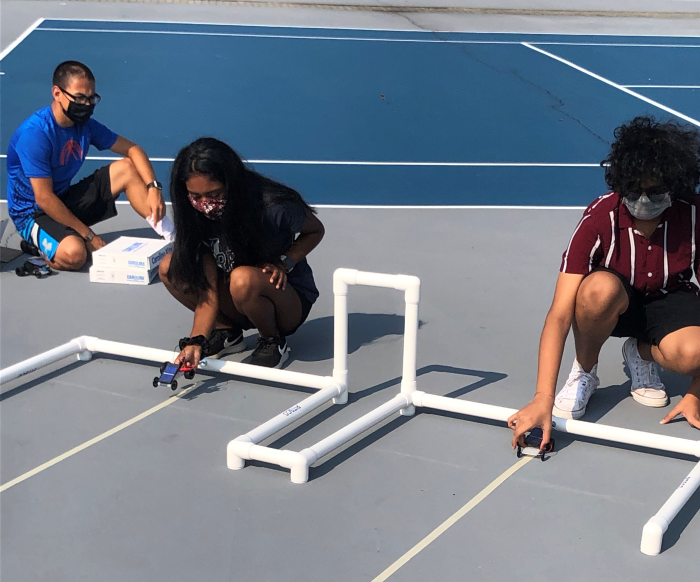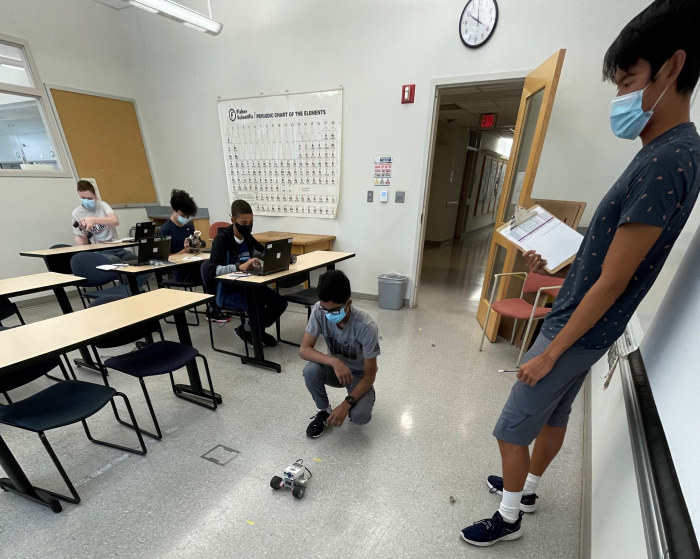Another Year, Another Victory for USAMRDC's GEMS Program

The U.S. Army Medical Research and Development Command’s annual “Gains in the Education of Mathematics and Science” (GEMS) program completed another successful session in early August, maintaining strong attendance numbers despite the challenges presented by the continuing novel coronavirus pandemic.
More than 1,660 students participated in this year’s iteration of the program, which is designed to promote science, technology, engineering and mathematics (STEM) education to children across the country. Notably, all five participating USAMRDC sites employed a hybrid learning style (or, a combination of both in-person and online learning) in an effort to adapt to the various COVID-19 mitigation efforts installed across the country. The “hybrid-style” effort follows the program’s implementation of a universal “online-only” model employed last year.
“Fortunately, we had experience planning for virtual learning given that this was the second year of a modified program,” said Taylor O'Guinn, USAMRDC GEMS program coordinator. “We wanted to make sure students enjoyed the program and learned STEM principles just as they would have for an in-person program.”
In all, five total USAMRDC sites participated in the 2021 GEMS program: the Walter Reed Army Institute of Research, the U.S. Army Aeromedical Research Laboratory, the U.S. Army Research Institute of Environmental Medicine, the U.S. Army Medical Research Institute of Chemical Defense and USAMRDC headquarters at Fort Detrick, Maryland. While 2021 attendance numbers are down slightly from a peak of more than 1,900 students last year, participation rose dramatically over a pre-pandemic high of 1,400 students in 2019; increased interest thanks largely to substantial and committed public outreach efforts on behalf of USAMRDC.

The program, which aims to reach students in grades four through twelve – while focusing chiefly on those historically underrepresented in STEM areas – continued its tradition of excellence by adapting its stable of popular experiments and activities for both in-person and at-home learning styles. Specific instructional modules are then designed to dovetail as much as possible with each lab’s respective mission. To that end, students at USARIEM focused chiefly on concepts related to neuroscience, biochemistry, biomechanics and physics. USAARL offered learning modules related to robotics, forensics and the building of simple machines. Lastly, at USAMRDC headquarters, attendees studied computer coding, maze navigation and even participated in a robust environmental science course which allowed for students to dissect a squid at home for the purpose of learning about the various internal body systems.
“The challenging part of coordinating a hybrid program is balancing staff and student schedules to make sure all participants felt safe while enjoying a fun, engaging program,” said O'Guinn. “Additionally, ensuring students are able to receive the help they need to complete projects at home is difficult but incredibly important.”
As the Army's medical materiel developer, USAMRDC has an enduring interest in developing the talent required to ensure the U.S. military maintains the medical capabilities to fight and win on the battlefield. USAMRDC is committed to fostering interest in STEM fields to facilitate the development of the Nation's future scientists; an effort which is seen as an investment in the long-term futures of both the respective students and the command as a whole.














